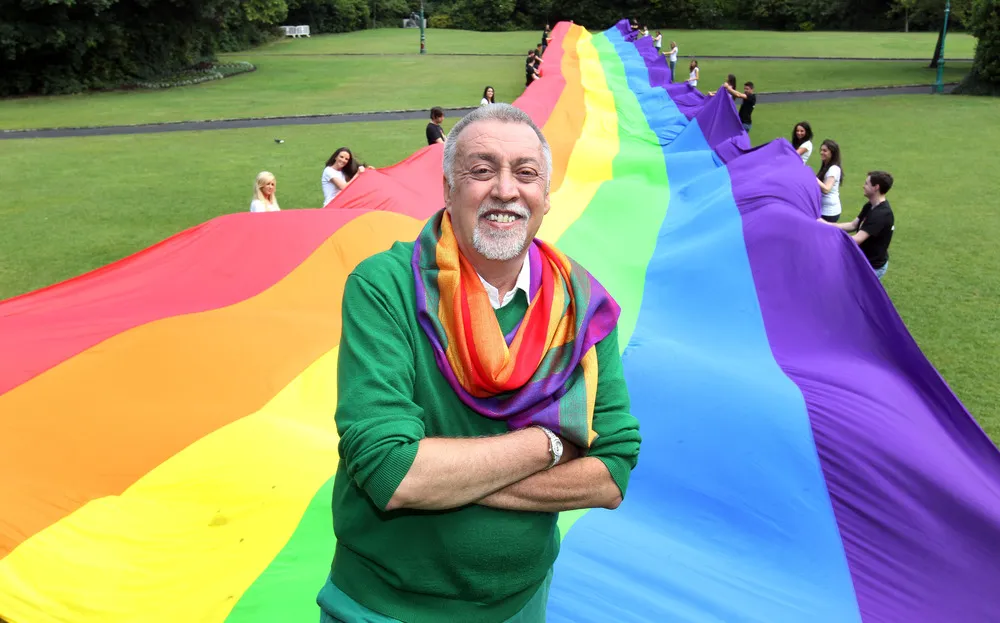
Gilbert Baker (1951 – 2017) was an American artist, activist, and designer best known for creating the rainbow flag, which has become the universal symbol of LGBTQ+ pride. Born in Chanute, Kansas, Baker was openly gay from a young age and moved to San Francisco in 1970, immersing himself in the burgeoning LGBTQ+ activist scene. He was deeply influenced by the counterculture of the era, participating in protests, art projects, and civil rights movements. In 1978, inspired by Harvey Milk’s vision for a unifying symbol for the gay community, Baker designed the first rainbow flag, originally composed of eight colors, each with symbolic meaning.
The flag debuted at San Francisco’s Pride Parade and quickly became a global emblem of visibility, diversity, and acceptance. Baker was also a talented painter, costume designer, and performer, bringing creativity and theatricality to his activism. He continued producing flags and engaging in public art projects until his death in 2017, leaving a legacy that reshaped how the LGBTQ+ community represents itself worldwide. Beyond the flag, Baker championed LGBTQ+ rights, inclusivity, and self-expression, inspiring generations to embrace identity and visibility.
